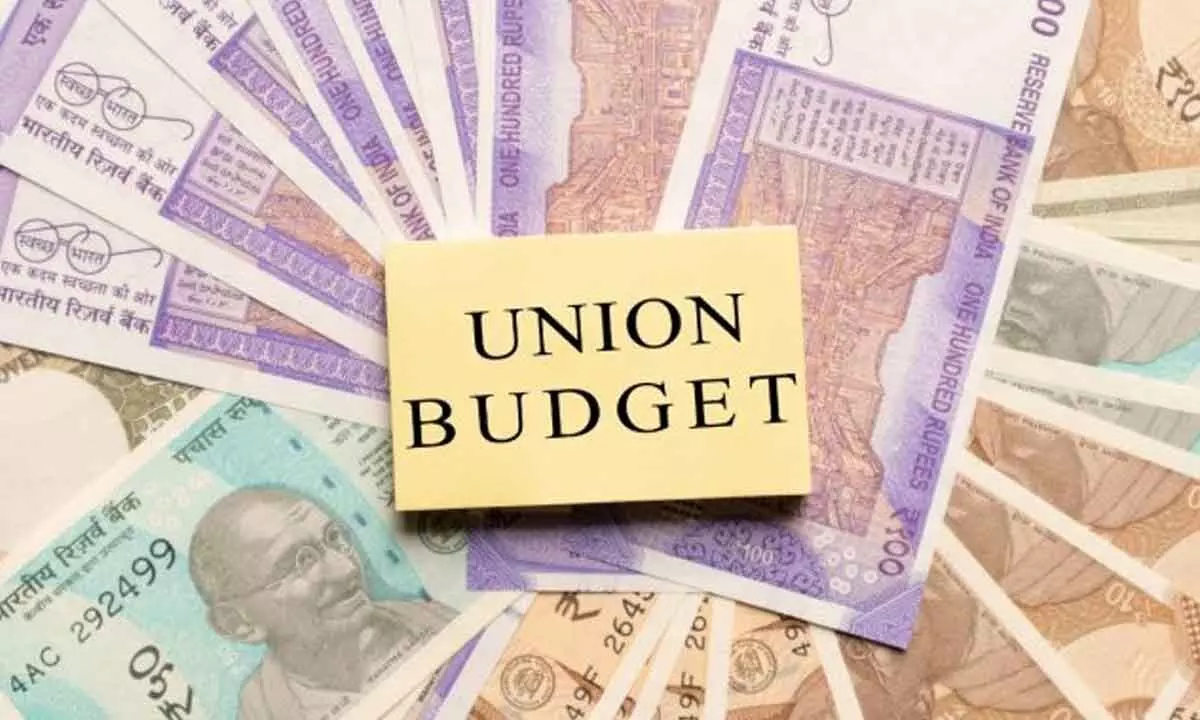Budget will focus on investment and growth
Bolstering services sector and MSMEs among priorities
image for illustrative purpose

The budget is often described as a political document rather than an economic one. This is true in many senses as the policy initiatives contained in this annual accounting exercise have to conform to the ideological aims of the government of the day.
At the same time, there is a great deal in the budget that is purely dictated by economic compulsions, including the need to deal with the impact of external developments. These include natural calamities and conflicts that can impact commodity, product prices and movement of goods. Over the past two years, the budgets have had to deal with geopolitical events that had wide ranging ramifications on the global economy. The first was the Covid pandemic and then the Ukraine war.
Thus budget making since 2021 has put the focus on trying to revive the economy from the ravages of the pandemic. Now it will have to deal with the effect of the war in Europe that has disrupted supply chains and created shortages and high prices of commodities and critical fuels. But for the government there is one more element in budget making that will make this more political than in the past. And that is the reality as this will be the last full budget before the next general elections slated for mid-2024. It can thus be presumed that there would be an effort to ensure that the common man is saved from the burden of fresh taxation to the maximum possible extent.
Achieving this objective becomes much easier for Union Finance Minister Nirmala Sitharaman this time as the Indian economy is being described as a bright spot in the gloom of recessionary threats hanging over most countries. The government itself is now pegging growth in the current fiscal at about seven per cent while forecasts for next year are in the region of 6.5 per cent. At this level, India is still set to be the fastest growing major economy this year.
Yet she has to consider the economy not just in comparison to the rest of the world. She will be trying to bring the economy back on track after it was derailed during the pandemic. It is a process that began last year and is likely going to be continued in the budget proposals for 2023-24.
One of the most significant elements last year had been the stress on infrastructure investments in a bid to stimulate growth. This drive is bound to be accelerated in the next fiscal, given the need to create more job opportunities. In any case, the plans laid out for the National Infrastructure Pipeline envisage launching of projects over a five-year period. Allocations are also expected to be raised for other ongoing schemes in the rail, roads and waterways sectors.
The Finance Minister may similarly consider measures to give an impetus to the services segment of the economy in view of its potential for employment generation. It was this sector including retail, tourism and trade that was hit hard during the Covid pandemic and led to enormous job losses. Though data has been showing that the services economy is reviving rapidly, there is need to ease bottlenecks that are impeding its full recovery.
An identical approach will have to be taken towards small and medium enterprises which were given credit support in special packages finalised after the pandemic. More assistance is needed to bring many MSMEs back into the black. Further easing of credit facilities is needed and this could be easier as the health of banking industry has improved significantly. As NPAs have been brought down, banks may feel more confident to go ahead with lending to smaller companies that are limping back to normalcy.
One of the key issues to be tackled is revenue mobilisation in order to ensure that the fiscal deficit is contained within acceptable limits. The deficit target for the current fiscal is 6.4 per cent of GDP and this has to be brought down gradually. On the indirect taxes front, the outlook is promising with the monthly GST inflows touching Rs. 1.5 lakh crore for quite some time. Even direct taxes have shown surprising buoyancy. At the same time, there is need to mobilise funds to support huge expenditures on programmes like the free food grains scheme, expanding rural employment programmes and a growing oil import bill.
Asset monetisation could be one way of raising additional resources, though this has been going slowly so far. Public sector disinvestment could also be stepped up but here too budgetary targets have not been achieved in recent years. In fact, there are indications that the target will be lower than usual this year in order to be more realistic about the implementation.
As far as tax changes are concerned, it is reported that the government is considering easing income tax provisions for the middle class. The standard deduction could be raised but more likely there will be a rationalisation of the tax structure. This would be in line with the thrust in recent budgets to bring about greater simplification and rationalisation of tax laws.
The budget for the next fiscal is thus likely to be more a continuation of last year's initiatives to enhance capital expenditure and stimulate investment and growth. The services sector and MSMEs may be given special attention as these are critical in generating employment, which needs to be stepped up on a priority basis. Export-oriented industries, which have been in the spotlight for the past few budgets, may also be given some support in light of the recent slowing pace of exports. Overall, the aim will be to spur growth without putting a burden on the common man, keeping an eye on elections.

